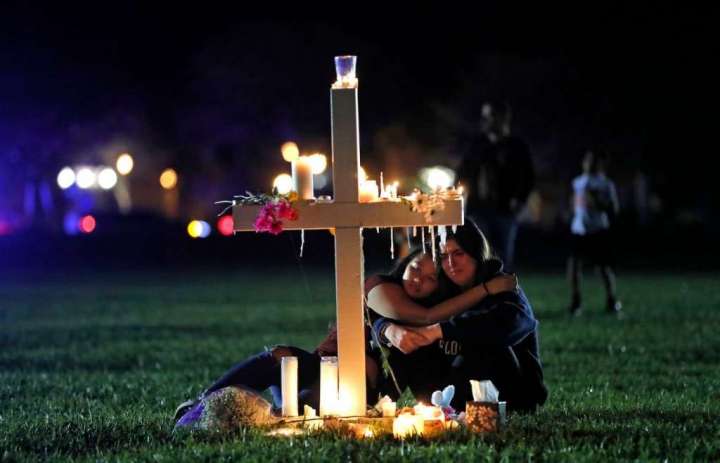For three decades, shame-proof Republicans in Congress have failed to support significant measures to restrict firearms purchases. Meanwhile, the ghastly roll call of mass shootings in schools, bars, stores, places of worship and elsewhere is unceasing.
How Florida’s red-flag law helps stop potential mass shootings

Known as a red-flag law, the measure allows the use of extreme-risk protection orders to temporarily remove or restrict firearms from people considered a threat to others or themselves. The policy, which is often misunderstood and typically underfunded, exists in D.C., and 19 states — including, surprisingly, Florida, sometimes called the “Gunshine State.”
“It can help take the gun out of someone’s hands before they do something terrible,” Detective Christopher Carita told me. He oversees extreme-risk protection order training for the Fort Lauderdale Police Threat Response Unit. “I’ve seen how they can prevent a mass shooting. The orders work.”
In 2018, Rick Scott — governor at the time, now a U.S. senator — defied fierce opposition from the National Rifle Association and signed a gun-control law that included a red-flag program. The signing came a few weeks after 17 people were shot to death at Marjory Stoneman Douglas High School in Parkland, Fla. The law also raised the minimum age for gun purchases to 21 and lengthened the waiting period.
Scott and Sen. Marco Rubio (R-Fla.) — hardly known as a gun-control advocate — have introduced a red-flag bill in the Senate that would provide grants to help states implement the program. Senate Republicans aren’t keen to federalize the policy but don’t seem to mind sending money.
As Sen. Kyrsten Sinema, a moderate Democrat from Arizona, told reporters, “There’s some shared agreement on red flag.”
Shannon Frattaroli, a professor and expert on gun violence prevention policy at the Johns Hopkins Bloomberg School of Public Health, told me that red-flag programs typically transcend political ideology. “There isn’t a lot of pushback.”
Police officers and researchers with expertise in the laws say they have preempted what could have become mass shootings or suicides.
Depending on the state, the policies give law enforcement, families and even clinicians who have observed troubling behavior the authority to file an emergency civil petition to block someone from purchasing guns and, for a limited time, to prohibit them from accessing guns they already own. In some states, including Florida, only police officers can file a petition, a rule that advocates want to broaden.
Immediately removing a troubled person’s ability to access firearms for as much as a year, after a court hearing, can defuse lethal situations. Frattaroli said it is useful that the law focuses on specific behavior — is the person stockpiling firearms while planning a shooting? Has the person made alarming statements or social-media posts? — rather than simply on mental illness, which is relatively common and seldom leads to violence.
“It provides an opportunity to intervene,” Frattaroli said. “To say, ‘Whatever you are going through right now, we have to figure it out without your access to guns.’”
The laws, modeled after domestic-violence orders of protection, are not foolproof. Even though the suspect of the mass shooting in a Buffalo supermarket where 10 died had exhibited troubling behavior in the past and had been referred to police, they didn’t make a red-flag request.
More funding for red-flag laws is needed to raise awareness among residents and help inform and train police departments, Carita said. And while the laws can help connect people to mental health resources, shortages of affordable treatment options are often insurmountable.
In all, nearly 9,000 orders have been issued in Florida, some for potential suicides, and 2,845 were active as of last week, a relatively high rate. Still, some Florida counties have never issued a red flag.
But Carita said the law has saved lives. He remembers one case in which a mother noticed her son’s rage and drove him to a doctor. The young man was hospitalized after he told the doctor he wanted to “kill some people,” as Carita recalled. That’s when the police unit became involved.
“We learned he had already purchased an AK-47 pistol, known as a Draco, and it was being held at the gun store on the three-day wait period, so he hadn’t received it yet,” Carita told me.
Carita’s unit secured an extreme-risk protection order and worked with his family. Two months later, the man tried to buy another Draco, but the order flagged him and a background check blocked the sale.
The man benefited from counseling and the buffer provided by the red flag that had allowed his anger to subside, Carita said. “He is now back with his family, working and living his life.”






